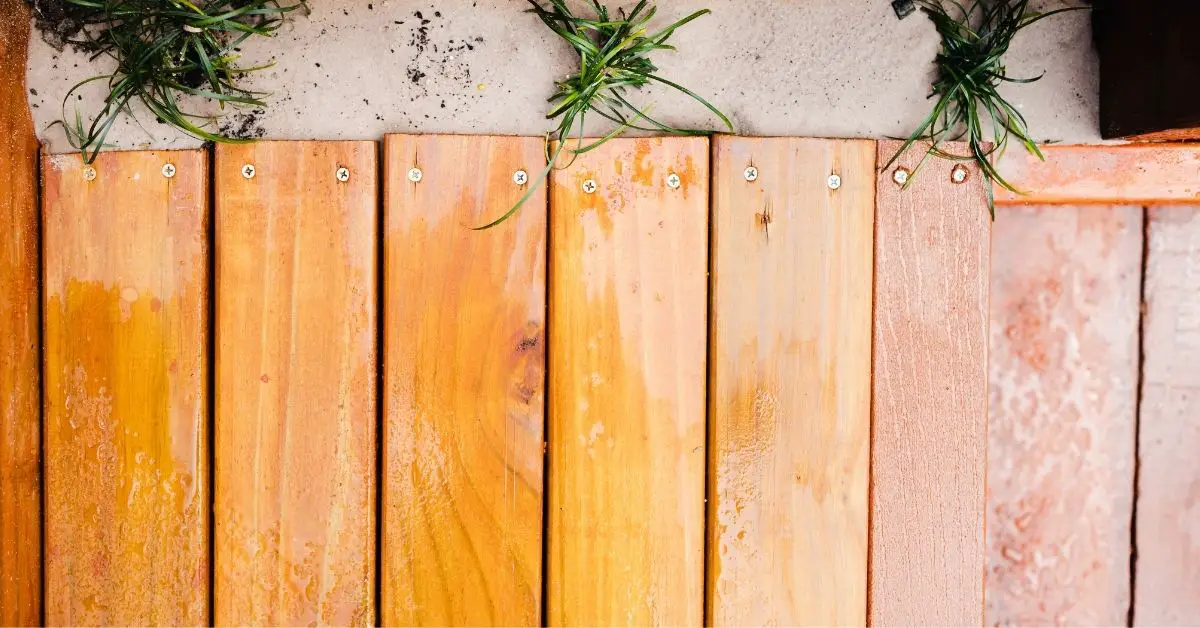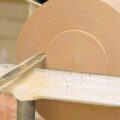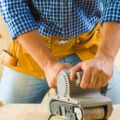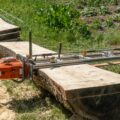Power Tools
Best Wood for Outdoor Projects
Not all wood species are capable of resisting rot and decay from moisture and pests. To get the best wood for outdoor projects, you have to know which types of wood are naturally weatherproof and slow to decay.
You have a number of options at your disposal, so the task is to find the most affordable one. Luckily, there are several affordable options, just as there are exotic choices that cost more.
All the options listed herein are proven winners, so you should do fine with whatever your budget allows you to get.
Economical Woods for Outdoor Projects
Redwood
If you live in the western parts of the U.S., you have easy access to redwood, a naturally durable outdoor wood. It is a dimensionally stable, straight-grained wood stock that naturally resists decay and is rich in tannins.
Redwood is pretty affordable regardless of where you get it, but it’s cheaper in the west. You only need to prep it well enough before staining to avoid excessive bleeding. Otherwise, it pretty much takes care of itself.
Western red cedar
Like redwood, western red cedar is straight-grained and chock-full of tannins. It is dimensionally sound and great for building outdoor projects because of its natural ability to resist insects, stay dry, and decay at a slower rate.
Western red cedar is predominantly sold in the Midwest, where you can get it at reasonably economical prices. It is, therefore, a good choice for large outdoor projects as it keeps the costs down.
Cypress
Cypress is widely available in the South and Southeast, where it grows in abundance. It is cheap, easy to find, and since it thrives in swampy environments, virtually immune to decay and pestilence.
Cypress is a wonderful wood to work with as it has an ash-like grain pattern that readily accepts finishes. Its heartwood color can be anything from light yellow-brown to reddish-brown to a dark brown, and its sapwood is nearly white.
White oak
Good old white oak is yard-tough and affordable. It should be on your list of outdoor woods if it’s available in your area.
Known as the “whiskey barrel” wood, white oak has tyloses plugging up its vessels, locking up its pores from infestation and preventing them from wicking up moisture. That’s why this type of wood is highly resistant to rot and insects and is, consequently, one of the best woods for outdoor projects.
Expensive wood
Teak
This boat-building wood is famously scarce and expensive. Not only is it beautiful, durable, and tough as they come, but it also never shrinks, even after prolonged contact with moisture. That suggests that it is more than adequate for an outdoor dining table or bar top.
Teak is one of the few species of wood that checks all the boxes. It resists insects, decay, and sunlight, plus it is so impervious to moisture that it can spend its life in it without shrinking. If you have the budget for teak, make sure it is highly-dense Brazilian teak, which is gorgeous and very good in humid conditions.
Spanish cedar
Spanish cedar is highly stable, an excellent choice for outdoor projects. It has impressive weathering characteristics, decay resistance, and can resist termites. In woodworking, it is commonly used to make millwork and exterior moldings.
If you really want Spanish cedar but can’t afford it, Sapele and Utile are cheaper, heavier, and denser wood species with similar weather resistance and a fantastic appearance. These woods are also available in wider and longer dimensions.
Mahogany
Mahogany is a great project wood. Woodworkers love it because it is so easy to work it. It machines, sands, and finishes with little fuss and is a fantastic option for outdoor furniture due to its wear-resistant, rot-resistant heartwood.
The main problem with mahogany is that it is prohibitively expensive. Not everyone can afford to do large projects with such expensive wood, but if you can fit it into your budget, it’s one of the best species money can buy.
Ipe (Brazilian walnut)
Brazilian walnut, better known as ipe, is a top-of-the-line wood species that are relatively new but already a top choice for building outdoor projects. It is so strong and stable that it has a functional lifespan of up to 40 years without treatment!
Ipe is resistant to denting, decomposition, warping, cracking, movements, and surface checks. Most of the ipe comes from Central and South America, but the wood species grow rapidly, so it is not hard to find all year round.
However, it is one of the more expensive wood species, sometimes costing as much as composite wood products. Still, it holds its reputation as the Brazilian ironwood due to its impressive durability.
What about treated lumber?
Pressure-treated lumber may be strong, dense, and fairly waterproof, but it is still prone to decomposition. Therefore, it can only serve as outdoor wood if primed and painted for maximum moisture prevention.
Chemical-treated wood fairs better against termites and other pests, but it is not usually food-safe and shouldn’t be in contact with human skin for too long. That disqualifies them from making garden furniture.
Which woods don’t fair well outdoors?
Red oak
Red oak is proof that not all wood species have the same attributes. While its cousin, the white oak, has excellent weather resistance, red oak soaks moisture like a straw. Don’t be tricked into getting just any oak species because red oak doesn’t do well as outdoor furniture.
Pine
Pine is a good, durable wood that mostly makes indoor furniture and works for outdoor projects.
The key to using pine is to prime it properly and paint it. This coat of protection is usually enough to stop it from absorbing moisture from the ground. However, for this to work, you have to stay on top of the paintwork, renewing it every time you notice peeling or flaking.
Alternatively, you can shelter your outdoor pine furniture under a covered porch to keep it nice and dry. It should be fine if it doesn’t come into too much contact with moisture.
Why You Should Trust Us
At Woodworking Tool Guide, we know one size doesn't fit all! We cater to every woodworker, from beginner to pro, with insights and recommendations tailored to your skill level, project needs, and budget. We take the guesswork out of choosing the right tools, whether you're tackling your first crafting a masterpiece for the ages. So grab your chisel, join our community, and let's build something amazing together!
Woodworking Tool Guide wasn't just born, it sprouted from a seed of passion for the craft. What started as a joyful exploration blossomed into a trusted online haven for fellow enthusiasts like you. We pour our love into meticulously chosen review selections, meticulous hands-on testing, and lab-backed insights, all to empower you with reliable, comprehensive information you can build on. So, grab your tools, trust our guidance, and let's build something beautiful together!
Passion-Driven Expertise
Our journey started with a shared love for woodworking. The team behind the Woodworking Tool Guide is comprised of individuals who are not just writers but passionate woodworkers themselves. This shared enthusiasm ensures that our content is crafted with a deep understanding of the craft and an authentic appreciation for quality tools.
Top Tool Guides Online
Woodworking Tool Guide has rapidly ascended to become one of the premier online destinations for tool guidance. Our commitment to excellence and the accuracy of our information has positioned us as a reliable source for both beginners and seasoned woodworkers seeking trustworthy advice on the best tools for their projects.
User-Centric Approach
Our content caters to every woodworker, from rookies just starting out to seasoned pros tackling intricate projects. We tailor our insights and recommendations to your skill level, project needs, and budget, ensuring you find the perfect tools to match your unique woodworking journey. So step into your workshop, grab your tool belt, and let Woodworking Tool Guide be your trusted companion as you craft your masterpieces.
Continuous Support and Innovation
Woodworking is an ever-evolving craft, and so is our commitment to supporting you. We are dedicated to bringing you the latest information on woodworking tools, techniques, and trends. Our team is actively working to expand our content and bring you more valuable insights, ensuring that you stay well-informed in your woodworking adventure.
Hands-On Experience
Ditch the endless research rabbit hole! At Woodworking Tool Guide, we believe in actionable advice, not armchair analysis. We get our hands dirty, putting every tool through its paces in real-world woodworking scenarios. Whether it's the precision of a table saw, the versatility of a router, or the tactile satisfaction of a handplane, we test for performance, durability, and user-friendliness. No more sifting through dry specs – we deliver practical insights you can trust to transform your woodworking dreams into reality.
Woodworking Tool Guide isn't just a review site, it's your trusted companion on the sawdust-filled path to woodworking mastery. Our expert team, led by veteran David Jones, meticulously tests and explains tools in terms you understand. We cut through the jargon, bias, and confusion with real-world insights and honest evaluations. Join our passionate community, where decades of experience, cutting-edge knowledge, and shared love for the craft come together to guide you every step of the way. So grab your chisel, buckle up, and let's embark on this exciting woodworking adventure, together!






